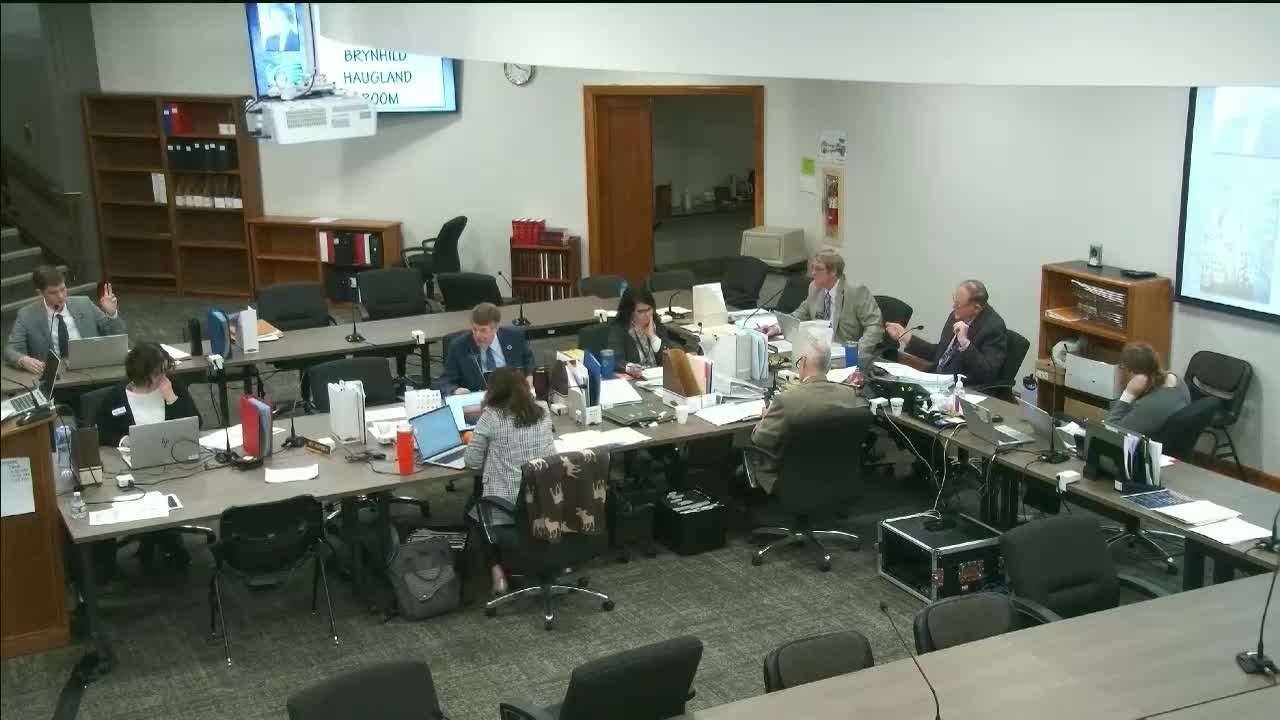State lawmakers debate budget cuts and agency funding amid 3% reduction challenges
January 29, 2025 | Appropriations - Government Operations Division, House of Representatives, Legislative, North Dakota
This article was created by AI summarizing key points discussed. AI makes mistakes, so for full details and context, please refer to the video of the full meeting. Please report any errors so we can fix them. Report an error »

During a recent meeting of the North Dakota House Appropriations - Government Operations Division, lawmakers engaged in a detailed discussion regarding the state budget and the implications of a proposed 3% reduction across various state agencies. The meeting, held on January 29, 2025, highlighted the complexities and challenges faced by agencies as they navigate budget constraints while striving to maintain essential services.
A key point of contention was the inconsistency in how different agencies implemented the 3% budget cut mandated by the governor. Some agencies reported difficulties in managing their budgets, particularly those that had already reduced staffing levels. For instance, one commissioner emphasized the strain on their agency, which had to administer over $500 million in property tax relief with fewer resources, resulting in increased workloads and a higher volume of public inquiries.
The committee also discussed the need for clarity regarding funding for various programs, including tax credits and veteran support initiatives. While some funding requests were approved, others were deferred for further consideration, particularly those related to salary equity funding. Lawmakers expressed the importance of ensuring that agencies have adequate resources to fulfill their mandates, especially in light of increased demands on their services.
In addition to budgetary concerns, the meeting addressed the need for effective communication and marketing strategies to promote tax relief programs. Lawmakers acknowledged that previous marketing efforts had been successful but noted that additional funding may be necessary to ensure continued public awareness and participation in these programs.
As the committee moves forward, the discussions from this meeting will play a crucial role in shaping the final budget decisions. Lawmakers are tasked with balancing fiscal responsibility with the need to support state agencies in delivering vital services to North Dakota residents. The outcomes of these discussions will be pivotal in determining how effectively the state can respond to the needs of its citizens in the coming biennium.
A key point of contention was the inconsistency in how different agencies implemented the 3% budget cut mandated by the governor. Some agencies reported difficulties in managing their budgets, particularly those that had already reduced staffing levels. For instance, one commissioner emphasized the strain on their agency, which had to administer over $500 million in property tax relief with fewer resources, resulting in increased workloads and a higher volume of public inquiries.
The committee also discussed the need for clarity regarding funding for various programs, including tax credits and veteran support initiatives. While some funding requests were approved, others were deferred for further consideration, particularly those related to salary equity funding. Lawmakers expressed the importance of ensuring that agencies have adequate resources to fulfill their mandates, especially in light of increased demands on their services.
In addition to budgetary concerns, the meeting addressed the need for effective communication and marketing strategies to promote tax relief programs. Lawmakers acknowledged that previous marketing efforts had been successful but noted that additional funding may be necessary to ensure continued public awareness and participation in these programs.
As the committee moves forward, the discussions from this meeting will play a crucial role in shaping the final budget decisions. Lawmakers are tasked with balancing fiscal responsibility with the need to support state agencies in delivering vital services to North Dakota residents. The outcomes of these discussions will be pivotal in determining how effectively the state can respond to the needs of its citizens in the coming biennium.
View full meeting
This article is based on a recent meeting—watch the full video and explore the complete transcript for deeper insights into the discussion.
View full meeting
